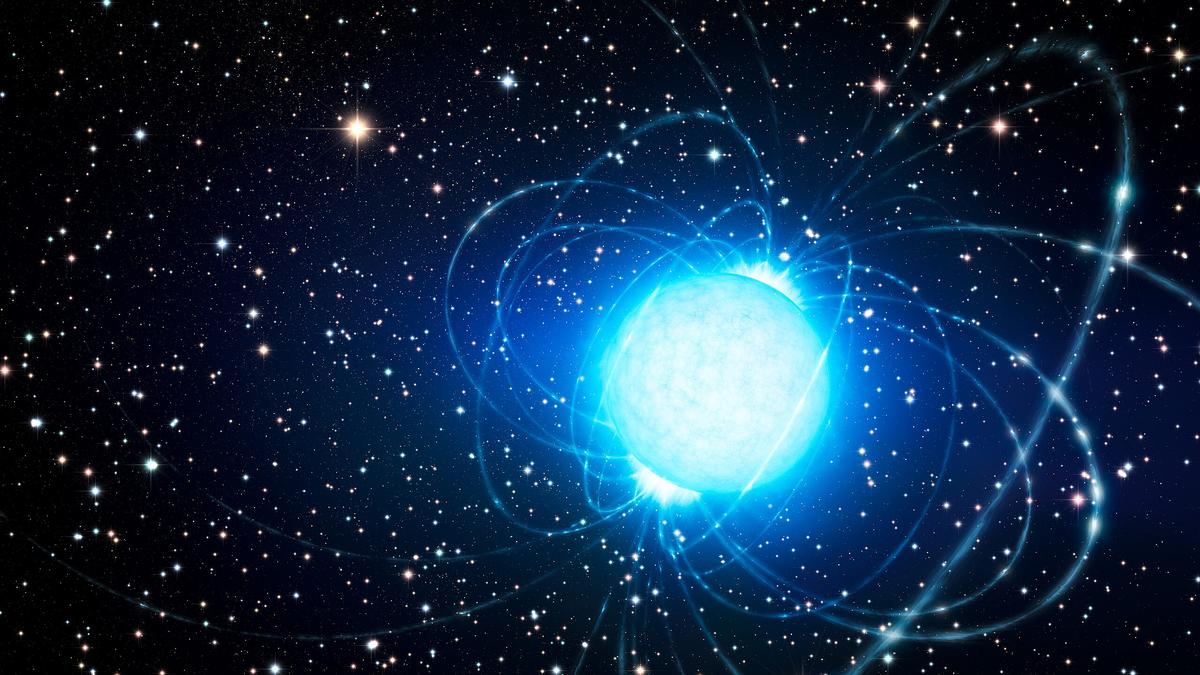An artist’s conception of a magnetar in a star cluster.
| Photo Credit: ESO/L. Calçada
In a new paper published in The Astrophysical Journal Letters, a team of researchers led by Anirudh Patel of Columbia University has reported that the universe may have another way to produce the precious element gold — which scientists have so far believed has been produced only in the cataclysmic collisions of ultra-dense worlds called neutron stars.
Knowing where different elements in the universe come from helps scientists understand how the universe’s chemical makeup has changed through time. The early universe only had hydrogen, helium, and trace amounts of lithium. All other elements were created later in stars, cosmic explosions, and laboratory experiments. Mapping the sources tells us how galaxies, stars, and planets took shape over time. Understanding the sources can also reveal how often an element was produced and how the presence of an element influenced the source’s own evolution.
The team reported the first direct observational evidence of a process called r-process nucleosynthesis in a powerful flare emitted by a body called a magnetar in 2004. Almost a day after the flare, the magnetar emitted strong gamma rays, which NASA’s Compton Gamma Ray Observatory recorded. Per the team, the delayed emission was inconsistent with standard flare afterglows and contained evidence of radioactive decay from r-process nuclei.
Magnetars are neutron stars with extremely strong magnetic fields. Sometimes they release large bursts of energy in flares.
The energy levels in the delayed emission and how it changed in time were found to be consistent with the decay signatures of radioactive isotopes rich in neutrons produced in the rapid neutron-capture process, or r-process. The team used models to conclude that 1.9 septillion kg of r-process material ejected at close to the speed of light could explain the delayed emission.
This means some magnetar flares can eject neutron-rich matter into space, where it goes through r-process nucleosynthesis to create heavy elements like gold. So far, physicists have believed that gold has predominantly been produced in mergers of neutron stars, which scientists study using space telescopes and gravitational wave detectors. Patel et al. also suggested that the universe may have had gold atoms sooner since the cosmos could have had magnetars before colliding neutron stars.
The authors also considered some alternative explanations — including noise in the measuring instruments and instruments misreading the flare’s afterglow — and ruled them out by comparisons with other data and detailed simulations.
Published – May 10, 2025 06:00 am IST
